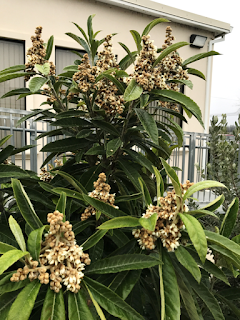Growing avocado trees in Central Valley could be challenging. It is important to select adapted cultivars. I have personal experience with five avocado cultivars: Mexicola, Duke, Aravaipa, Royal-Wright, and Second Red. The latest two are my introductions from old (most likely seedlings) trees in Santa Rosa.
Mexicola
The tree is large and vigorous. I planted my tree in 2001 on the northwest corner of my house. It started producing in 3-4 years after planting. The fruits are black, small, very flavorful, creamy and nutty with soft edible skin. It produces good crop every year between September and November. The trees of this cultivar are available at the retail nurseries.
Duke
This is an old Californian cultivar. Was commercially grown before Haas. The mother tree grows at the old Oroville Depot.
Chaffin Family farm still produces them, and the fruits are occasionally available at the Chico market in October. Bill Bird wrote about
this cultivar back in 2012. The fruits are green, thin skinned, larger than Mexicola, not so complex in flavor, but creamy and smooth. This is a good cultivar to grow in Central Valley, because it's cold tolerant, maybe the most frost resistant cultivar that we have here. The seedlings of this cultivar make good rootstocks for our area. See how the Duke fruits compare with Mexicola in the picture below. Dukes are the green fruits on the left.
Aravaipa
This cultivar came from Arizona desert and said to tolerate the temperatures between 14F and 120F.
In my experience, it is a very fast and vigorous grower. The grafts and trees bloom in the second year after grafting, with good production in the third year. The fruiting season is October and November. The fruits are green, larger than Mexicola, not so rich in flavor, but quite good for guacamole. I really like to use the seedlings of this cultivar as rootstocks; they germinate soon after planting, and grow fast. I guess they might be as good rootstocks as the Duke seedlings. In the below picture two Aravaipa fruits are on the right. The black ones are Mexicola.
The cut fruits of Aravaipa (upper left), Mexicola (upper right), and Duke (bottom) in the image below.
Second Red
The original tree of this cultivar grows in Santa Rosa, CA on Second street. The fruits are red, hence the name. I collected the scions in 2016, and made the first trees then. This cultivar seems to be the most cold sensitive from the ones described here. Nevertheless, the tree made it fine after 3 years in ground. It was planted in 2016, and at the time it was a few months old newly grafted tree. The temperature range it has experienced was from 23F to 108F. Now, after the third winter in ground, the tree has no damage at all. In the first and second winters, the upper growth was affected. I didn't use any frost protective measures. The tree is about 6 feet wide and tall now, and it didn't fruit yet. The fruit I tried from the tree in Santa Rosa was excellent. The fruits are large, dark red and glossy. The flavor is nutty and complex. The texture is smooth and oily. They are ready in February - March. See the fruit in the picture below. I'm looking forward to tasting my own fruits from this tree.

Second Red avocado tree is also very ornamental in spring when it produces deep red new leaves, see the picture below.
Royal-Wright
The original mature tree grows in a private yard in Santa Rosa, CA. I collected the material in 2016 and started grafting. Two small grafted trees were planted in Vacaville in summer of 2016. This is a frost tolerant (23F with slight damage of young tree, no damage last winter), fast growing, precocious, spring producing avocado. I harvested the first fruits from one of my trees this year. As this is the spring ripening avocado, the fruits should be on the tree for about a year. The fruiting season is March to May. The tree blooms in April and May. The fruits are large, green, creamy and nutty in flavor. See the fruit size in the picture below.
The new growth on this avocado is also very ornamental in spring. The new shoots and leaves are deep brown-red. The picture below shows the tree color in May (left) vs March (right).
The last four varieties are not available as trees in commercial nurseries, with the exception of Aravaipa, that is available occasionally at
https://www.greenlifebyshamusoleary.com/ in Arizona.
I distributed the scions from all these trees through the Sacramento CRFG grafting meetings and green wood exchanges. Occasionally, I sell the scionwood at
ReallyGoodPlants.com























